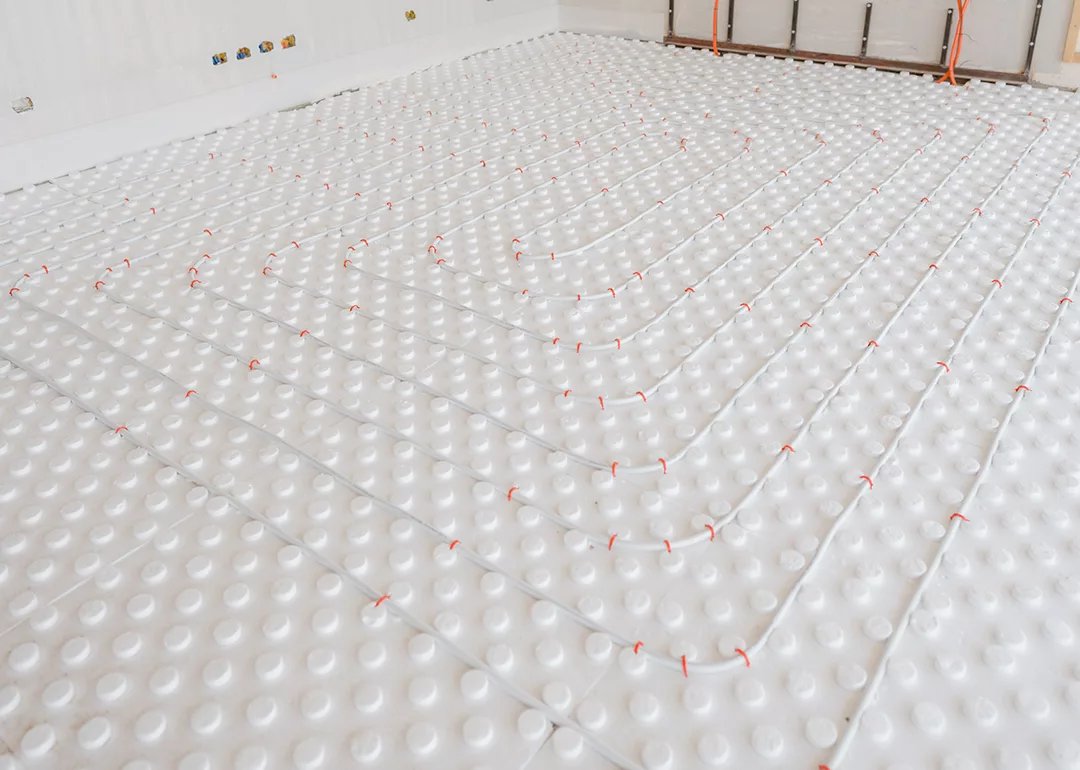How does underfloor heating work?
Underfloor Heating System
- A boiler or heat pump supplies heat to the system by heating the water (that is pumped through it.
- Primary pipework carries the heat from the heat source to the manifold(s). Manifolds distribute the heat to the underfloor pipe loops.
- Pipe loops, with hot water flowing through them, heat the floor, typically at least 1 loop for every 20 m2 of heated floor area.
- Controller switches the heat source on and off, and directs the heat to where it is needed to heat the rooms to the desired temperature.
- Underfloor heating requires a flow temperature of around 50°C flow and 40°C return.
- Feel comfort by controlling the temperature of each room with a Thermostat or by your smart home application.
Enjoy Ultimate Comfort with Our Underfloor Heating System!
Tired of cold floors? Experience even, energy-efficient warmth in every corner of your home with our advanced underfloor heating system! Say goodbye to bulky radiators and hello to a sleek, modern heating solution.
✅ Energy-saving & cost-effective
✅ Perfect for any room & flooring type
✅ Expert installation & support
📞 Got questions? Need a free consultation? We’re here to help! Chat with our experts now on WhatsApp and get personalized advice.
Or Call Us
Transform your home with warmth & comfort today!

Underfloor Heating System Characteristics:
- THERMAL WELL-BEING

Temperature distribution with floor heating system

Temperature distribution with convective system
-
- Absence of convective motions.
- Vertical distribution of temperature.
- The temperature distribution is the nearest to the ideal curve and therefore “thermal well- being”.
- ENERGY SAVING
… To save about 25% or more thanks to:- Low temperature of the heating fluid.
- Elevated heating surfaces.
- Reduced heat loss.
- Thermal well-being at lower room temperatures (1°C less than traditional systems).
- HYGIENIC CONDITIONS
- There is no transport of dust normally caused by the convective motions.
- No combustion of dust that creates stains on walls.
- No risk of irritation of air tracts.
- ARCHITECTURAL ADVANTAGES
- No architectural limits linked to the presence of radiators / fan heaters.
- Possibility of using all available space.
- Minimum architectural impact in buildings such museums and old villas.
Enjoy Ultimate Comfort with Our Underfloor Heating System!
Tired of cold floors? Experience even, energy-efficient warmth in every corner of your home with our advanced underfloor heating system! Say goodbye to bulky radiators and hello to a sleek, modern heating solution.
✅ Energy-saving & cost-effective
✅ Perfect for any room & flooring type
✅ Expert installation & support
📞 Got questions? Need a free consultation? We’re here to help! Chat with our experts now on WhatsApp and get personalized advice.
Or Call Us
Transform your home with warmth & comfort today!



Contact
Copyright by Climake. All rights reserved.

